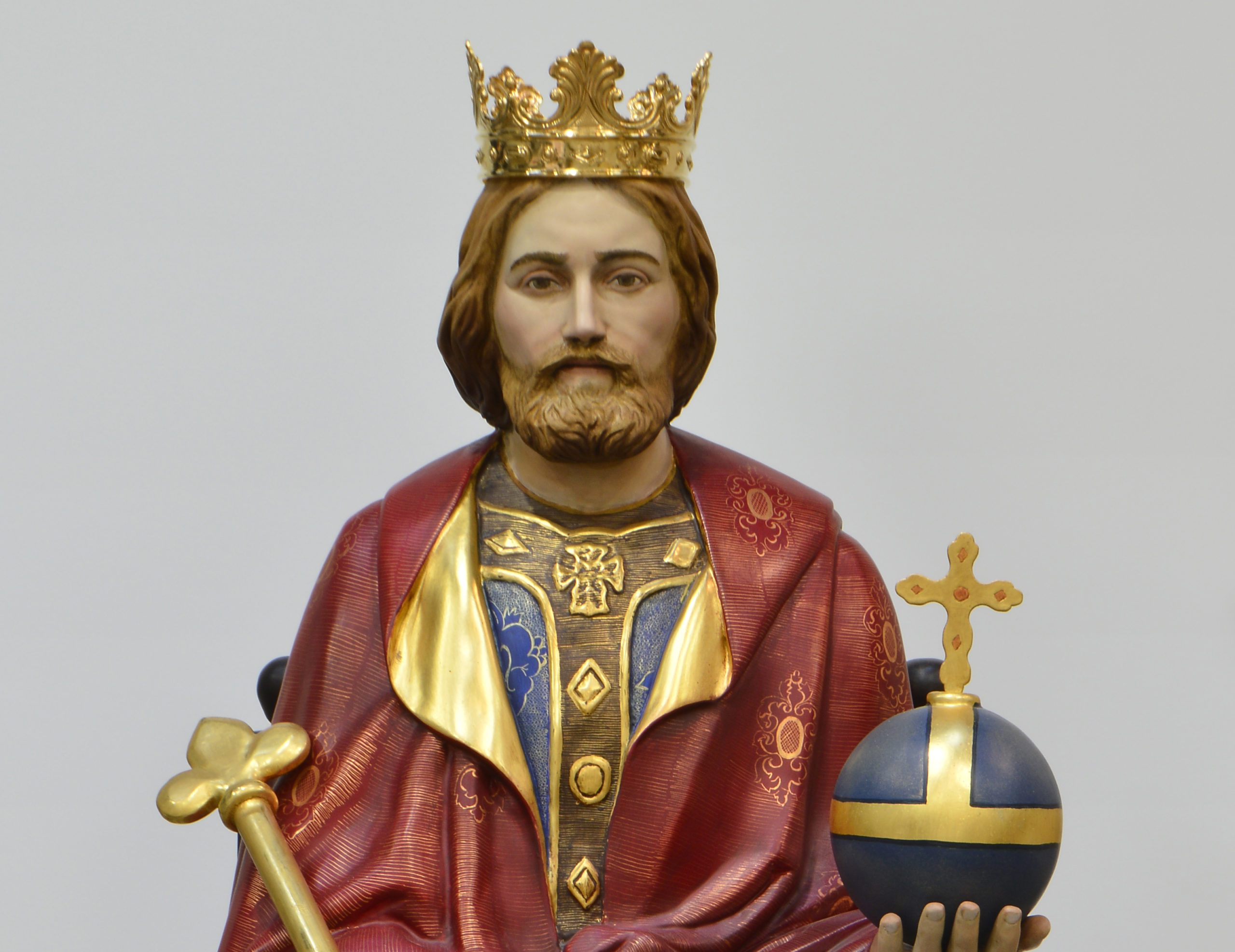(Image: process of elaboration of the carving of Saint Olav in the Granda workshop).
There was a time when the official religion of Norway was Catholicism. And this was thanks to St. Olav, one of the few saints of Norwegian origin with worship in the Catholic Church, whose sculpture Granda has just completed for the Trondheim Cathedral, the city where his remains are venerated.
Attributes of St. Olav
The image, made in wood and polychrome, represents St. Olav as a mature man with royal attributes, seated on a throne and dressed in rich clothes and crowned. In one hand he holds the orb or globus crucigeras a sign of his temporal power at the service of the Church.
Sometimes he is also represented standing with a halberd or a double-edged axe in one hand, symbol of his warrior activity, and at his feet, a dragon with a human head, as a symbol of defeated paganism.
The facets of his life: the Viking, the king and the saint
The life of this saint was fascinating. Born in 984, he was the son of Harald Grenske and great-great-grandson of King Harald I of Norway. During his teenage years, he participated, as a good Viking, in numerous razzias or plundering expeditions carried out on the European coasts, reaching places as far away as Santiago de Compostela. The saga tells that while waiting for favorable winds to try to reach Santiago through the Ría de Arosa, Olav had a dream: An imposing voice spoke to him: "Return to your land and you will be the Perpetual King of Norway".
Olav decides to return and on his way to Rouen, in Normandy, he converts to Christianity and will be baptized, thus abandoning the pagan cults of the ancient Vikings. What really happened? Did he lose the battle and decide to return? Was it the proximity of the apostle St. James who had an influence on him? It is not known. What is certain is that on his return to Norway he decided to exercise his rights of succession and unify under his command the country that was divided between local clans and harassed by Denmark and Sweden.

After his coronation in 1015, Olav progressively implanted and strengthened the Catholic religion, which became the official religion of the kingdom in 1024. He brought to Norway four bishops from England and ordered the construction of churches throughout the territory. The state adopted the ecclesiastical precepts as laws. Polygamy, rape, the abduction of women and the abandonment of newborns in the field or in the forest, who now had to be baptized compulsorily, were forbidden. The dead had to be buried in holy ground and not in stone burial mounds in the hills, as was the case in pagan traditions. Sacred burial was denied to criminals, murderers and suicides. The king himself traveled extensively throughout the country to enforce the new laws.
He also enacted the law of equality, according to which the aristocracy had to obey the law and be punished to the same extent as the peasants. This, together with the threat of expropriation of their lands, caused the aristocracy to become reluctant to keep Olav as their monarch and they began to conspire to overthrow him.
In 1028 King Canute II of Denmark invaded Norway and Olav, abandoned by part of the army, had to go into exile in Kiev. Two years later, in 1030, he returned and confronted the Danish side, dying in the battle.
Some historians have tried to see in the solar eclipse that occurred a few hours after his death, as well as in the miraculous healings by contact with his blood, an attempt by his biographers to establish a similarity with Christ's own death.
His early tomb, on the banks of the river Nij, was soon the scene of miraculous events and only a year after his death, when signs of sanctity were found on his body, Olaf was quickly venerated as the patron saint of Norway. His body was moved to the church of St. Clement in Nidaros (present-day Trondheim) where a century later a great cathedral was built in his memory.
The official canonization by the Church would take place in the year 1041, being one of the first in which a man-at-arms was sanctified.
